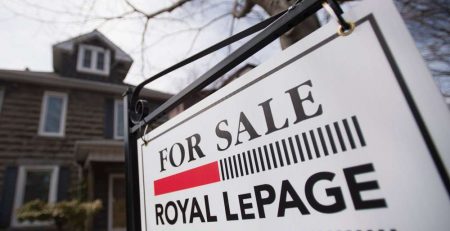Bought your first home? Don’t hurry the renovations
Pat Giles and his wife bought a house a year and a half ago. They’re already thinking about renovating the kitchen.
A brand new kitchen is a tempting prospect, but it is neither a short nor a cheap renovation. Mr. Giles, 36, is keenly aware of this. He’s associate vice-president of real-estate secured lending with Toronto-Dominion Bank, and regularly talks about renovation financing with colleagues across Canada. He’s following the same advice he and his colleagues give to clients.
“For us, it’s about making sure we’re planning ahead, thinking about different financing options, and that we have a safety net in place,” he says.
After the initial excitement of purchasing your first home, upgrading it to fit your dreams is an attractive next step. But for many first-home buyers in their 30s, the path to home renovation can be littered with pitfalls.
It can even be a dangerous choice, considering how little equity is usually built in the early days of ownership, and how much extra debt a renovation can require. Pulling it off without hurting your long-term finances requires planning, patience and financial flexibility.
TrustedPros.ca, a home-improvement contractor review-and-search platform, recently assessed project postings and search behaviour from more than 2 million Canadians and found major discrepancies between expected and actual renovation costs. Budgets for bathroom renos averaged about $7,900, versus contractor estimates of $12,500 or thousands more. Homeowners’ kitchen budgets fell usually around $14,500, versus more realistic estimates of $20,000 or higher.
Mr. Giles says there are three key steps to prepare for such early home renos. The first is to build a realistic budget, outlining both the costs and sources of funding. Then there’s figuring out the financing options. Building on those steps, the third step is ensuring that there’s buffer room for unexpected costs.
“As part of my own planning, whenever we’re getting our costs given to us, I’m personally pushing it up 10 to 15 per cent,” Mr. Giles says. This should be the minimum for everyone’s savings buffer, he continues.
Most advisers recommend assessing to see whether renovations fit within a client’s savings – such as using cash stored in a tax-free savings account – before going into debt.
Scott Hannah, the Vancouver-based president and chief executive officer of Credit Counselling Society, says that with increased access to credit and the prevalence of do-it-yourself TV shows and websites, there’s a “sense of urgency” that new home buyers fall into lately.
This, he suggests, is not wise. “Especially in those early years of home ownership, when you’re most exposed to risk and haven’t built up equity, that’s the worst time to build up more debt,” he says. Instead, new homeowners should look at the big picture, building savings for unplanned events, such as replacing a broken furnace or drainpipe.
He believes Canadians should be more concerned with debt, pointing to recent findings revealed by credit monitor TransUnion, which show that more than 700,000 people would have trouble keeping up with their finances if interest rates increased even 0.25 percentage points.
“The strategy should be, ‘We want to get comfortable with our payments and save up for emergencies,’ ” Mr. Hannah says.
Costs, after all, can always go up. A small problem might reveal a bigger problem upon fixing. Or a contractor may have to take out more of the ceiling than expected when putting in new lights, raising the cost of a job above the original estimate. Or perhaps worse, you may need to move out for the short-term because the renovations are disruptive, adding rental costs atop everything else.
The older the home, the wiser it is to have a buffer in your budget beyond the usual recommended 10 to 15 per cent above projected costs. When Bettina Schnarr, a certified financial planner with HollisWealth in Surrey, B.C., recently renovated her own older house, she found asbestos, and was forced to pay for abatement.
“If you can have more [savings available], that’s great – especially for older homes, because you have a lot of unforeseen things,” Ms. Schnarr says.
For the many homeowners who’d prefer to forge ahead anyway, financial experts suggest minimizing that debt – and especially its interest rate – is crucial.
“You have to ensure that for the entire financing of the project … you’re feeling comfortable with the amount you’re borrowing and it fits within your overall budget,” says Mr. Giles.
Many experts recommend a home-equity line of credit as a low-interest option to pay for the non-savings portion of renovations. Borrowing against the equity in your home with a HELOC will generally have a lower interest rate than standard lines of credit, and certainly less than credit cards.
There are even cost-saving opportunities when getting the line of credit, Ms. Schnarr says. If one is offered upon buying a home, she recommends to “take it, because there are costs for applying later.”
Ms. Schnarr recommends that any renovation homeowners take on add value to the home when it’s time to sell – and notes that value can be subjective. “Always make sure, whatever you do, that the design isn’t too far out there,” she says. “You want to appeal to the masses.”
But living in B.C.’s Lower Mainland, she also warns that increasing one’s housing debt isn’t a great idea. Being ready for emergencies is more important. “Kitchens and bathrooms sell,” she says, “but make sure your basics are covered first.”
The balance, Mr. Hannah says, is in managing expectations. “That’s the hard part of it for a lot of younger people. We all have our wants, but it’s all about looking after our needs first,” he says.
TD’s Mr. Giles is happy to be patient with his own new home. He and his wife have no plans to move again soon, and are happy to hold off on that new kitchen.
“We’re not in an immediate hurry to jump into renovations,” he says, “which is why we’re taking our time in the planning process.”











